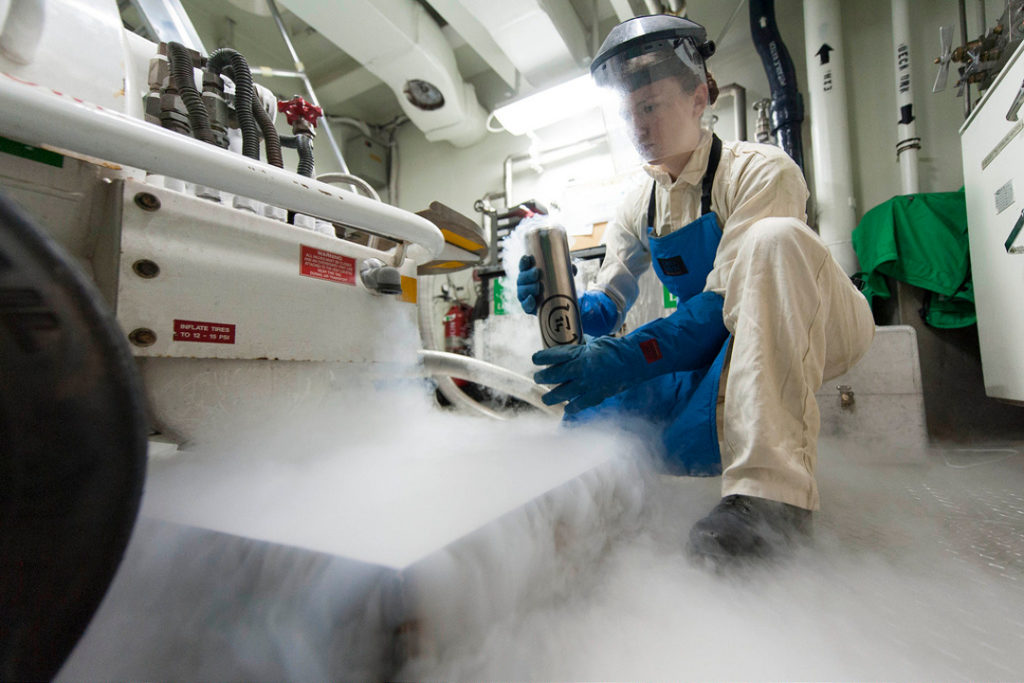
Contents
What is Liquid Nitrogen?
In scientific terms, liquid nitrogen is colorless and odorless nitrogen found in a liquid state at its lowest temperature. One of the most characteristic features of liquid nitrogen is it freezes rapidly and thus, is commonly used to make ice-creams.How is it used?
Mainly liquid nitrogen is used for freezing and transport of food and biological products.- When foods are frozen in a traditional freezer, they form relatively large ice crystals, which impact the consistency of the product. By comparison, liquid nitrogen forms microscopic ice crystals, which can create frozen foods with an almost unbelievably creamy consistency.
- It is used routinely in medicine to freeze off warts, including genital and HIV-related warts.
- Dermatologists can use it to simply dry out the unwanted tissue and let it fall off. Surgeons also use cryotherapy to eliminate cancerous cells.
- In the kitchen, It is used to make ice cream and freeze alcohol.
Consequences
- Except the smoke, liquid nitrogen is a chemical element in the frozen liquid state that has now become a trend in using to preserve food and beverages. There is no treatment for the organs affected with liquid nitrogen.
- Consuming liquid nitrogen can cause severe damage to the person’s internal organ. Naturally, it expands manifolds while evaporating. If the person consumed liquid nitrogen and it starts converting into the gas which did not have an escape route due to close sphincter, then it leads to a perforation (hole) in the stomach.
- There are instances where liquid nitrogen leads to exposure.
- It must completely be evaporated before any food or drink containing it is consumed. Consuming even a small amount of liquid nitrogen can have catastrophic consequences.
- The extensive contact you would get from taking drinks that contain liquid nitrogen would cause severe damage to your mouth, esophagus, and stomach.
- It can cause harm in one of two ways. The first and most obvious way is that it can cause cold burns. The second is that it can displace oxygen in the air and suffocate people
Precautions
- Liquid nitrogen can be unsafe if used with ignorance but if you use it in the right way with the right technique there may not be any harm.
- It totally evaporates by the time the food or drink reaches the consumer. So it is safe for consumption. But that’s not the case with cocktails because they are made and served immediately.
- It is dangerous substance to handle without proper knowledge.
- It is permitted as a process additive in frozen food by the national regulatory body, Food Safety and Standards Authority of India (FSSAI).